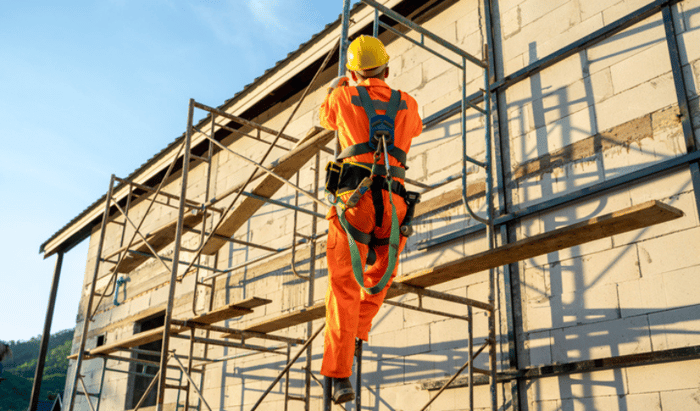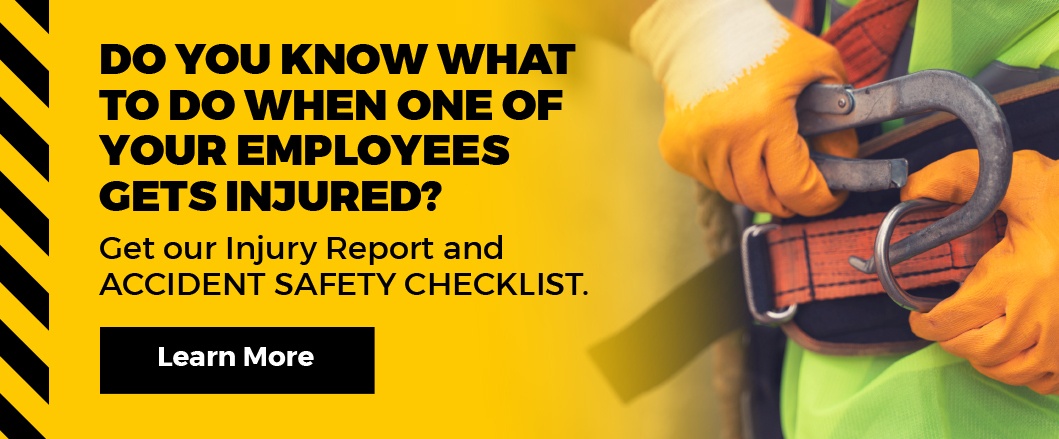
Data from the annual Census of Fatal Occupational Injuries shows that in 2020, 108 workers died as a result of accidents on a construction site. Of the 108 deaths, 80 of them were due to falls, slips and trips from roofs. OSHA requires workers to use some method of fall protection when working at heights greater than six feet. Learning how to use proper roof safety equipment can prevent construction accidents and reduce your company’s losses.
What is roof safety
Roof safety involves adopting and using safety and preventive measures to avoid accidents while working on rooftops. Every employer with workers involved in roofing should practice roof safety measures to avoid personal injuries and structural damage.
- OSHA reports that falls are the number one cause of deaths in the construction industry.
- OSHA also reports that falls from roofs account for 34% of all fall deaths in construction.
- In 2020, there were 351 fatal falls to a lower level out of 1,008 construction fatalities.
Clearly, falls continue to pose a serious risk to contractors and roof safety needs to be a top priority for any site that requires work at a height of 6 feet or more.
The first step to reducing these tragic statistics and keeping workers safer is identifying the key hazards on rooftop construction projects.
common rooftop safety hazards
There are a range of hazards present on construction sites and rooftops. Depending on the particular site and the nature of the project, some of the key hazards include:
- Low parapets
- Unprotected roof edges
- Skylights
- Roof holes
- Loose debris
- Unsecured or misplaced ladders
- Unsecured roof safety equipment
- Unpredictable weather
- Power tools
- Electrical cables and equipment
- Hazardous substances
Roof safety equipment and roof fall protection
The following preventive measures and safety equipment are vital ways to avoid rooftop falls and accidents on your job sites, and are encouraged by OSHA’s guidelines for roof fall protection.
In addition to preventing serious accidents and fatalities, these measures can help you avoid costly fines and a damaged reputation.
Let’s explore some key examples of effective and life-saving roof and construction safety equipment.
Guardrail Systems
A guardrail system is installed around a roof perimeter to prevent accidental falls. They can be permanent or temporary. OSHA provides guidelines for a guardrail’s height, composition and location for various buildings. These are commonly used on steep roofs with unprotected sides at least six feet or higher off the ground, and are often used in combination with safety nets or personal fall arrest systems.
Personal Fall Arrest (PFA) Systems
A personal fall arrest (PFA) system consists of an anchor, connectors and a body harness. Workers are attached to the roof by a lanyard that is of sufficient strength to hold a certain weight. Every PFA system must be certified by OSHA and tested regularly for wear or damage.
Related Content: How to Participate in a Fall Prevention Safety Stand-Down
Safety Nets
A safety net is a webbed or mesh net made from strong fibers that is suspended just below the roof edge or skylight. It is intended to be a fallback measure if a PFA or guardrail system fails. OSHA regulations also prescribe the materials safety nets are to be made from, their tensile strength, where and how they are to be hung and how often they should be tested for damage.
Warning Line Systems
Warning line systems differ from guardrail systems in that they are simply a wire, rope or chain barrier that prevents contractors from entering unprotected areas. While this heavy-duty warning system is able to withstand up to 500 pounds of pressure, they are typically used on low-sloped roofs where maintaining footing is easier. They can also be combined with a guardrail system, PFA or a safety net.
Training
OSHA requires employers to provide a training program that teaches contractors and employees to recognize and minimize fall hazards and reduce the risk of fall accidents. This training is imperative to keep your team safe and your job site compliant with all federal, state and local safety codes.
Your workers and contractors must be trained in the following areas:
- The nature of fall hazards in the work area
- The correct procedures for erecting, maintaining, disassembling and inspecting fall protection systems
- The use and operation of controlled access zones, guardrails, PFA systems, safety nets, warning lines and safety monitoring systems
- The role of each worker in a safety monitoring system (if one is in place)
- The limitations of mechanical equipment during roofing work
- The correct procedures for erecting overhead protection
- OSHA’s current fall protection standards for construction workers
Employers should remember that they must have a written certification that identifies the workers trained in these roof safety measures and the date of the most recent training.
Final Thoughts
Emphasizing roof safety and training your employees on common rooftop hazards and how to use the proper fall protection equipment can save lives and limit injuries. Not only is this training essential for improved safety, it is required to maintain compliance with OSHA safety standards. Make sure your team is up-to-date on current standards for roof safety training.


















